DOI: https://doi.org/10.1016/j.chaos.2024.114653
تاريخ النشر: 2024-02-26
ديناميات نموذج البحيرات الملوثة عبر مشغلات كسرية-فراكتالية باستخدام خوارزميتين عدديتين مختلفتين
الملخص
نستخدم نوى من نوع ميتاج-ليفلر لحل نظام من المعادلات التفاضلية الكسرية باستخدام مشغلات كسرية-فراغية (FF) ذات ترتيب كسرية وفراغية. باستخدام مفهوم المشتقات FF ذات الذاكرة غير المتناهية وغير المحلية، يتم دراسة نموذج لثلاثة بحيرات ملوثة مع مصدر واحد للتلوث. تُستخدم خصائص التحويل غير المتناقص والمضغوط لإثبات وجود حل لنموذج FF لنظام البحيرات الملوثة. لهذا الغرض، يتم استخدام نظرية ليراي-شودر. بعد استكشاف متطلبات الاستقرار في أربع نسخ، يتم محاكاة النموذج المقترح لنظام البحيرات الملوثة باستخدام تقنيتين عدديتين جديدتين تستندان إلى طرق متعددات الحدود لأدامز-باشفورث ونيوتن. يتم توضيح تأثير التفاضل الكسرية-الفراغية عدديًا. علاوة على ذلك، يتم عرض تأثير المشتقات FF تحت ثلاثة نماذج إدخال محددة للملوث: خطي، متناقص أسيًا، ودوري.
MSC: 34A08; 65P99.
1 المقدمة
تُظهر الفقرات السابقة تفرد الحل. علاوة على ذلك، باستخدام التحليل الوظيفي، يتم استكشاف العديد من المتطلبات لأنواع مختلفة من الاستقرار لحل نموذج نظام البحيرات الملوثة في القسم 5. لمحاكاة نموذجنا، نستخدم تقنيتين مختلفتين: نهج آدامز-باشفورث الكسري (القسم 6) وأخرى تعتمد على كثيرات الحدود لنيوتن (القسم 7). ثم يتم اختبار النتائج النظرية التي تم الحصول عليها في القسم 8 من خلال تطبيق خوارزمياتنا مع بعض البيانات الملموسة تحت قيم مختلفة من الترتيب الكسري والفركتالي في ثلاث حالات مختلفة: نماذج حقيقية خطية، تتناقص بشكل أسي، ومدخلات دورية. نختتم بالقسم 9 الذي يحتوي على الاستنتاج.
2 نموذج FF لنظام ملوث من ثلاثة بحيرات
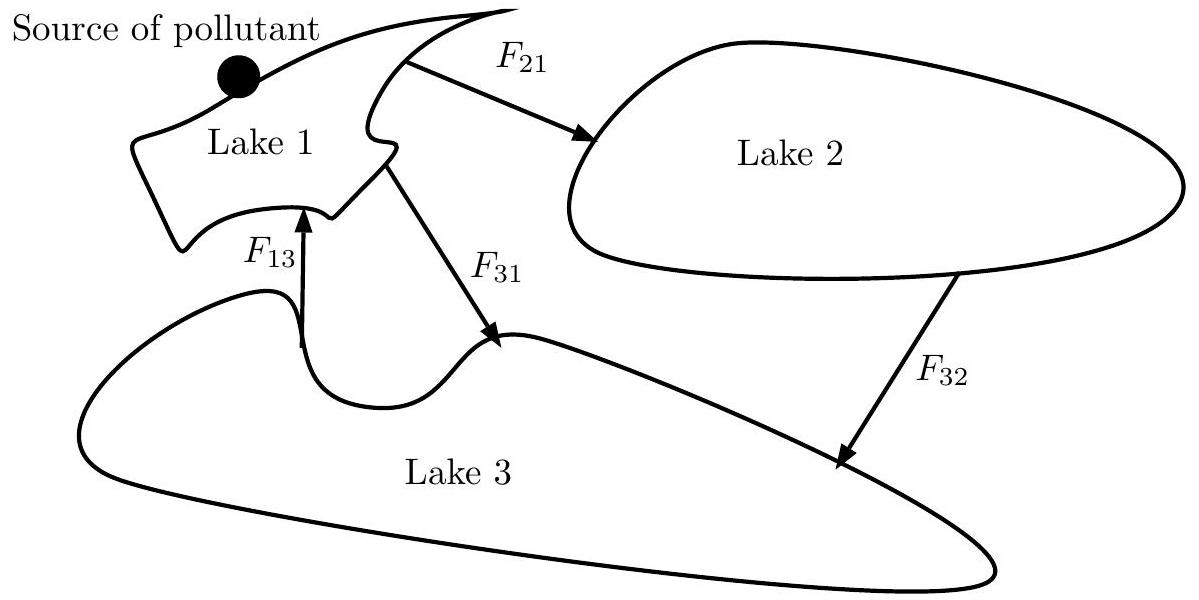
فيما يلي، نستخدم أيضًا المفهوم المقابل للتكامل الكسري الفركتالي.
التعريف 2 (انظر [16]). الـ (
3 الوجود
(Y1)
(Y2)
نظرًا لأن نظام البحيرة الملوثة يمثل مشكلة في العالم الحقيقي، فإن وجوده يخضع لقيود معينة. تلعب هذه القيود، المشار إليها في النظرية 4 بـ (P1) و (P2)، دورًا حاسمًا في تشكيل ديناميات وخصائص النظام. في الواقع، تعتبر (P1) و (P2) ضرورية لتعريف وتنظيم سلوك نظام البحيرة الملوثة ضمن حدود العملية والواقع. إن التعرف على هذه القيود أمر أساسي لبناء فهم شامل للنظام وتطوير استراتيجيات فعالة.
(P1)
ثم توجد حل لنظام البحيرة الملوثة الفراكتالية الكسرية (4).
برهان. أولاً، اعتبر
4 التفرد
(C1)
ثم،
نظرية 6. لنفترض أن (C1) صحيحة. إذا
5 استقرار أولام-هايرس-راسياس
(ط)
(ii) لدى المرء
ملاحظة 11. إذا
(ط)
(ii) لدينا
اللمّا 14. لكل
لإثبات نتيجتنا التالية (انظر اللمحة 15)، نعتبر الشرط التالي:
(C2) توجد دوال متزايدة
نحن الآن في وضع يمكننا من دراسة استقرار أولام-هايرز لنموذج FF لنظام البحيرة الملوثة (4).
برهان. لن
6 خوارزمية عددية عبر طريقة آدامز-باشفورث
7 خوارزمية عددية عبر متعددات نيوتن
8 المحاكاة العددية والمناقشة
8.1 نموذج الإدخال الخطي
عرض لـ
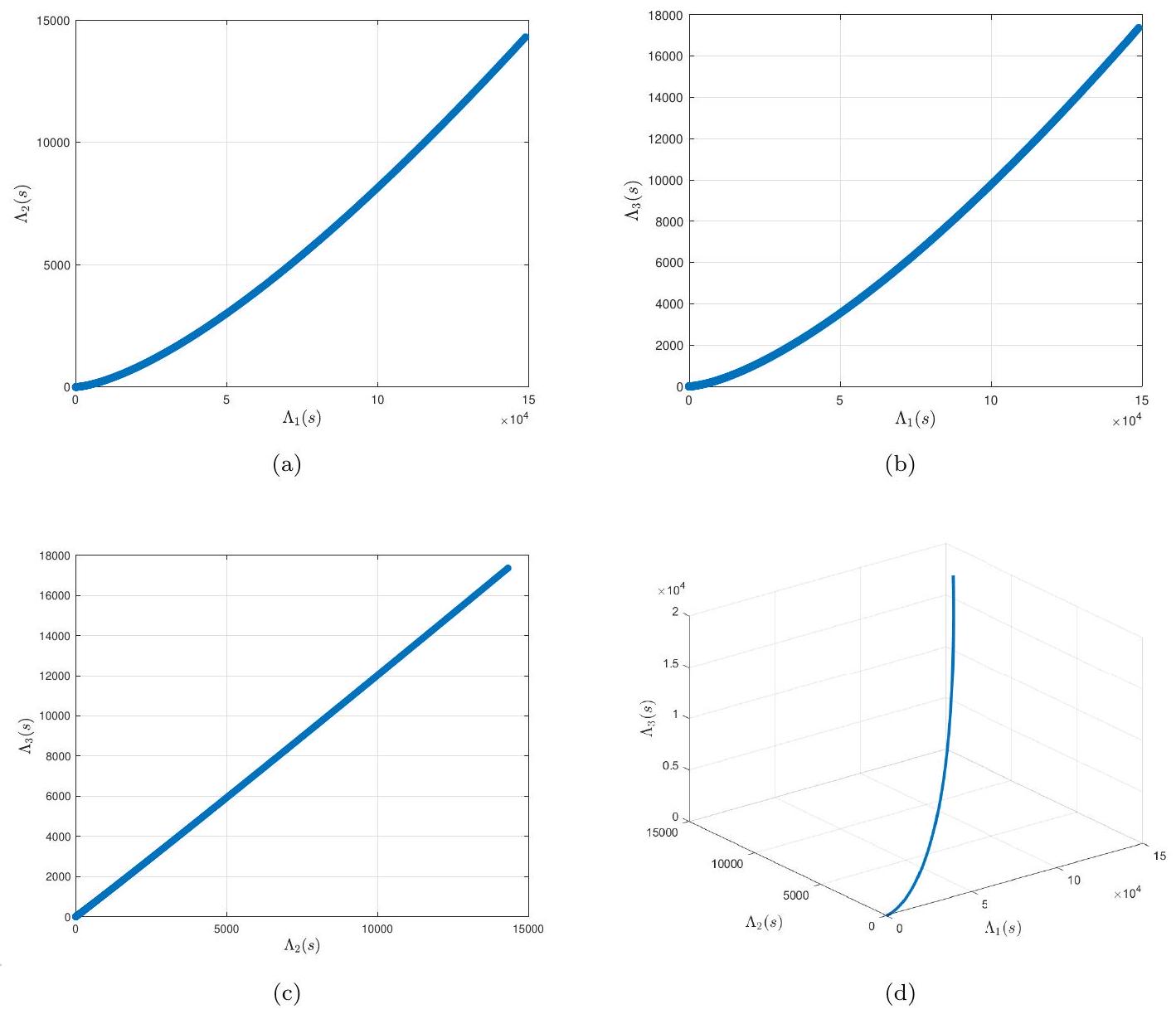
|
|
أدامز-باشفورث | متعددات نيوتن | ||||
|
|
|
|
|
|
|
|
| 0 | 0.000000 | 0.00000 | 0.000000 | 0.000000 | 0.000000 | 0.000000 |
| 1 | ٥٨.٢٤١٧٦٢ | 0.122200 | 0.136038 | ٥٨.٢٤٩٠٢٩ | 0.114027 | 0.126944 |
| 2 | 216.569135 | 0.912690 | 1.018175 | 216.603012 | 0.891958 | 0.995030 |
| ٣ | 472.231987 | 2.959673 | 3.308340 | ٤٧٢.٢٩١٨٣٩ | ٢.٩٢٦٧٢٣ | ٣.٢٧١٤٣٨ |
| ٤ | 824.018631 | 6.830863 | 7.650506 | 824.103833 | 6.786029 | 7.600138 |
| ٥ | 1270.753481 | 13.074750 | 14.671769 | 1270.863423 | 13.018359 | 14.608218 |
| ٦ | 1811.296055 | 22.221220 | ٢٤.٩٨٢٧٢٦ | 1811.430139 | 22.153588 | ٢٤.٩٠٦٢٧٣ |
| ٧ | ٢٤٤٤٫٥٣٩٩٩٠ | ٣٤.٧٨٢١٥٦ | ٣٩.١٧٧٨٥٤ | 2444.697632 | ٣٤.٧٠٣٥٩٥ | ٣٩٫٠٨٨٧٧٤ |
| ٨ | ٣١٦٩.٤١٢٠٩٤ | 51.252025 | 57.835881 | ٣١٦٩.٥٩٢٧٢١ | 51.162836 | 57.734443 |
| 9 | 3984.871413 | 72.108440 | 81.520147 | 3985.074465 | 72.008917 | 81.406618 |
| 10 | ٤٨٨٩.٩٠٨٣٢٤ | 97.812711 | ١١٠.٧٧٨٩٦٦ | ٤٨٩٠.١٣٣٢٥٤ | 97.703141 | 110.653605 |
في الشكل 4، نوضح سلوك الدوال الثلاثة للحالة
8.2 نموذج الإدخال المتناقص أسيًا
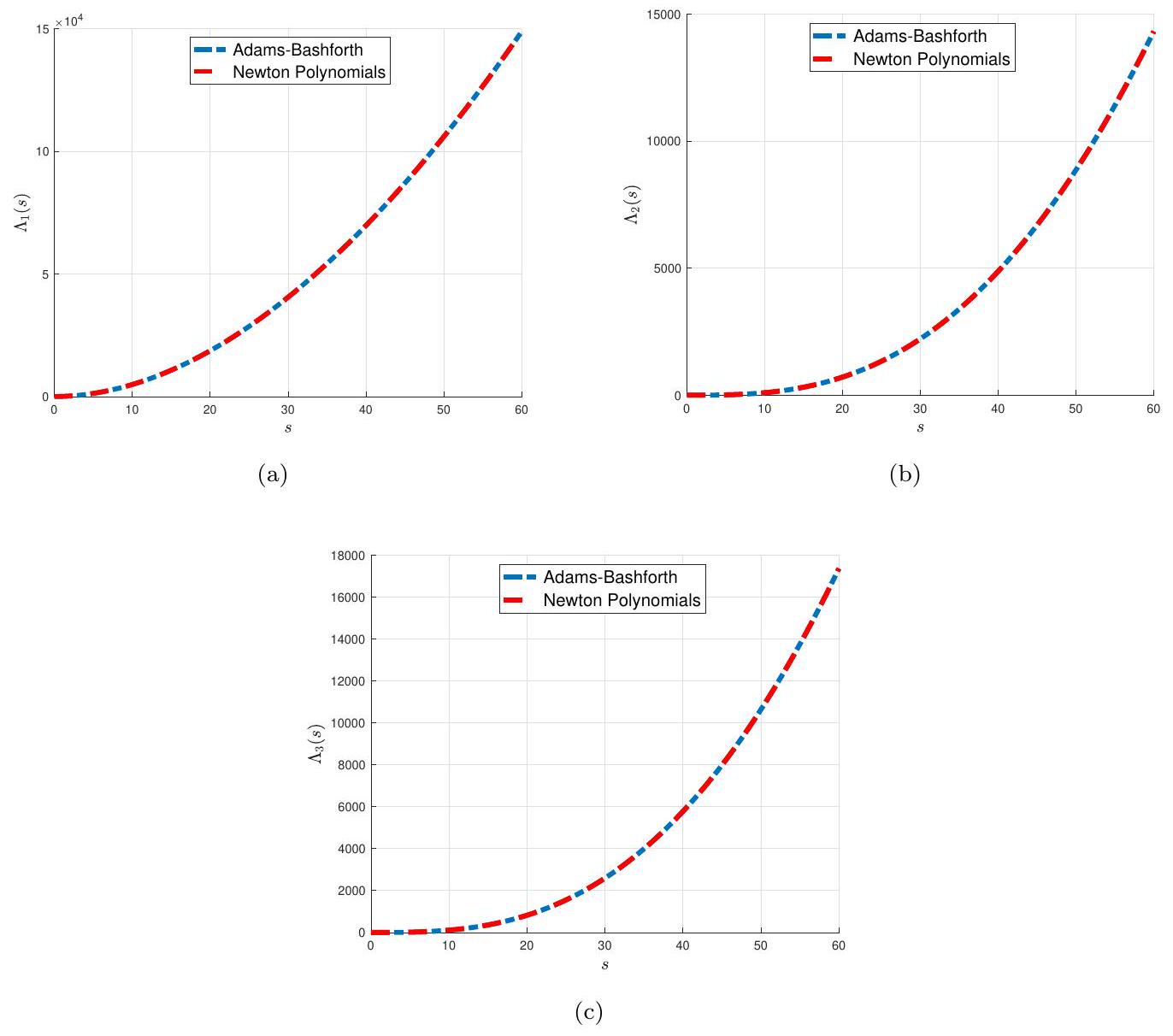
8.3 نموذج الإدخال الدوري
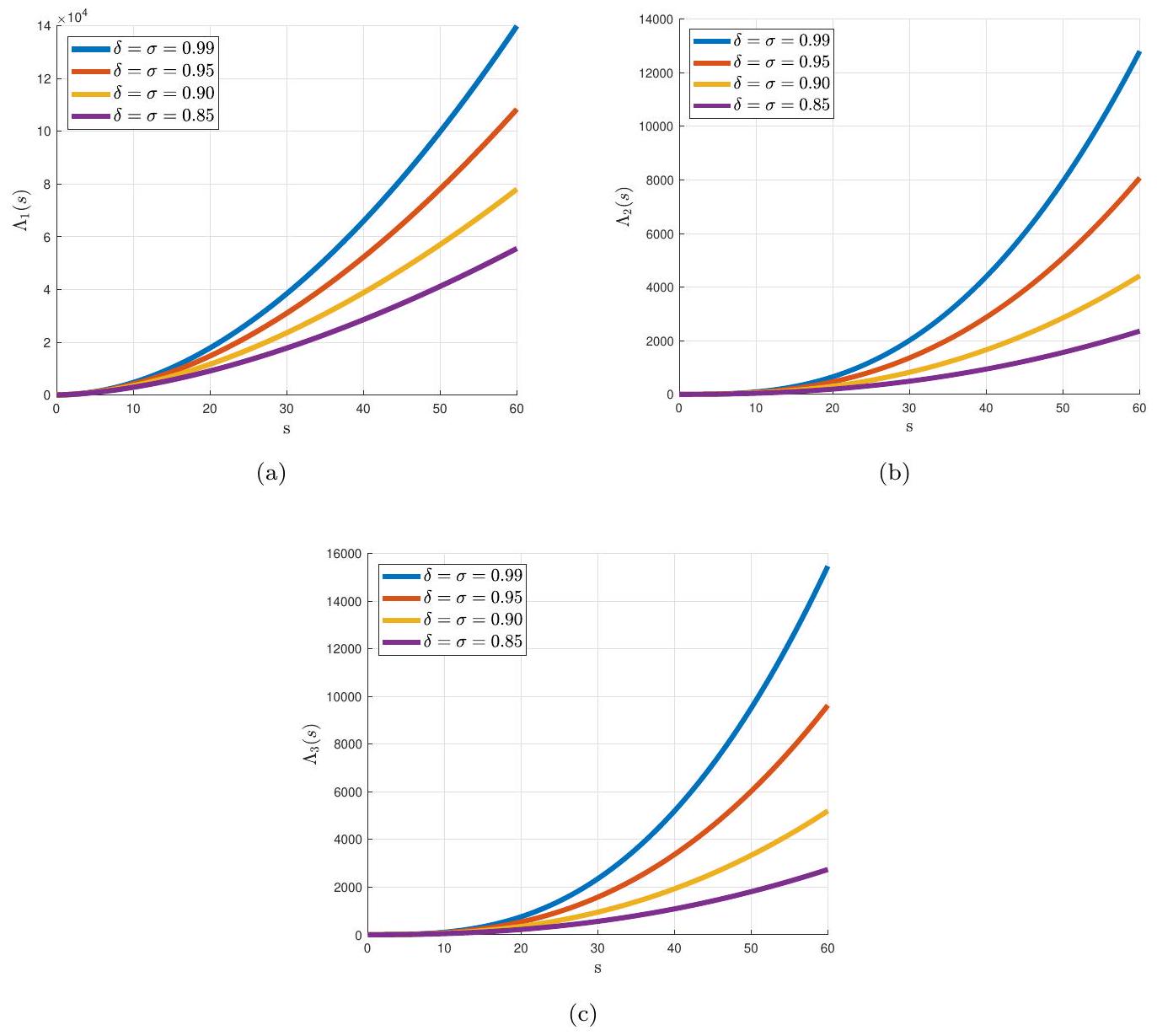
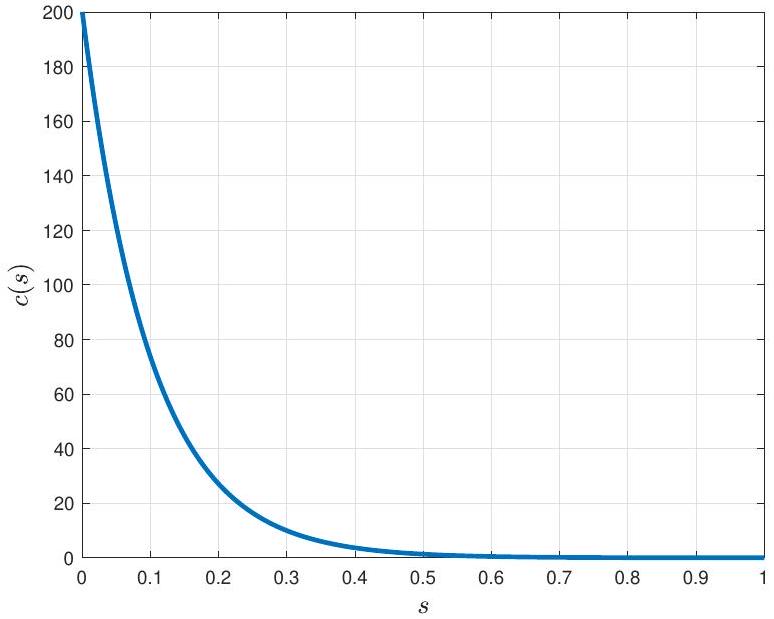
|
|
أدامز-باشفورث | متعددات نيوتن | ||||
|
|
|
|
|
|
|
|
| 0 | 0.000000 | 0.00000 | 0.000000 | 0.000000 | 0.000000 | 0.000000 |
| 1 | 18.988642 | 0.105437 | 0.117578 | 18.988592 | 0.105145 | 0.117021 |
| 2 | 18.748146 | 0.219107 | 0.245295 | 18.752821 | 0.216590 | 0.242237 |
| ٣ | 18.513934 | 0.328934 | 0.369679 | 18.523194 | 0.324269 | 0.364185 |
| ٤ | 18.286698 | 0.435044 | 0.490805 | 18.300406 | 0.428303 | 0.482940 |
| ٥ | 18.066244 | 0.537556 | 0.608748 | 18.084267 | 0.528808 | 0.598573 |
| ٦ | 17.852383 | 0.636586 | 0.723579 | 17.874593 | 0.625901 | 0.711155 |
| ٧ | 17.644931 | 0.732247 | 0.835369 | 17.671201 | 0.719691 | 0.820757 |
| ٨ | 17.443709 | 0.824649 | 0.944190 | 17.473918 | 0.810285 | 0.927446 |
| 9 | 17.248540 | 0.913898 | 1.050109 | 17.282570 | 0.897787 | 1.031291 |
| 10 | 17.059256 | 1.000097 | 1.153195 | 17.096990 | 0.982299 | 1.132359 |
9 الخاتمة
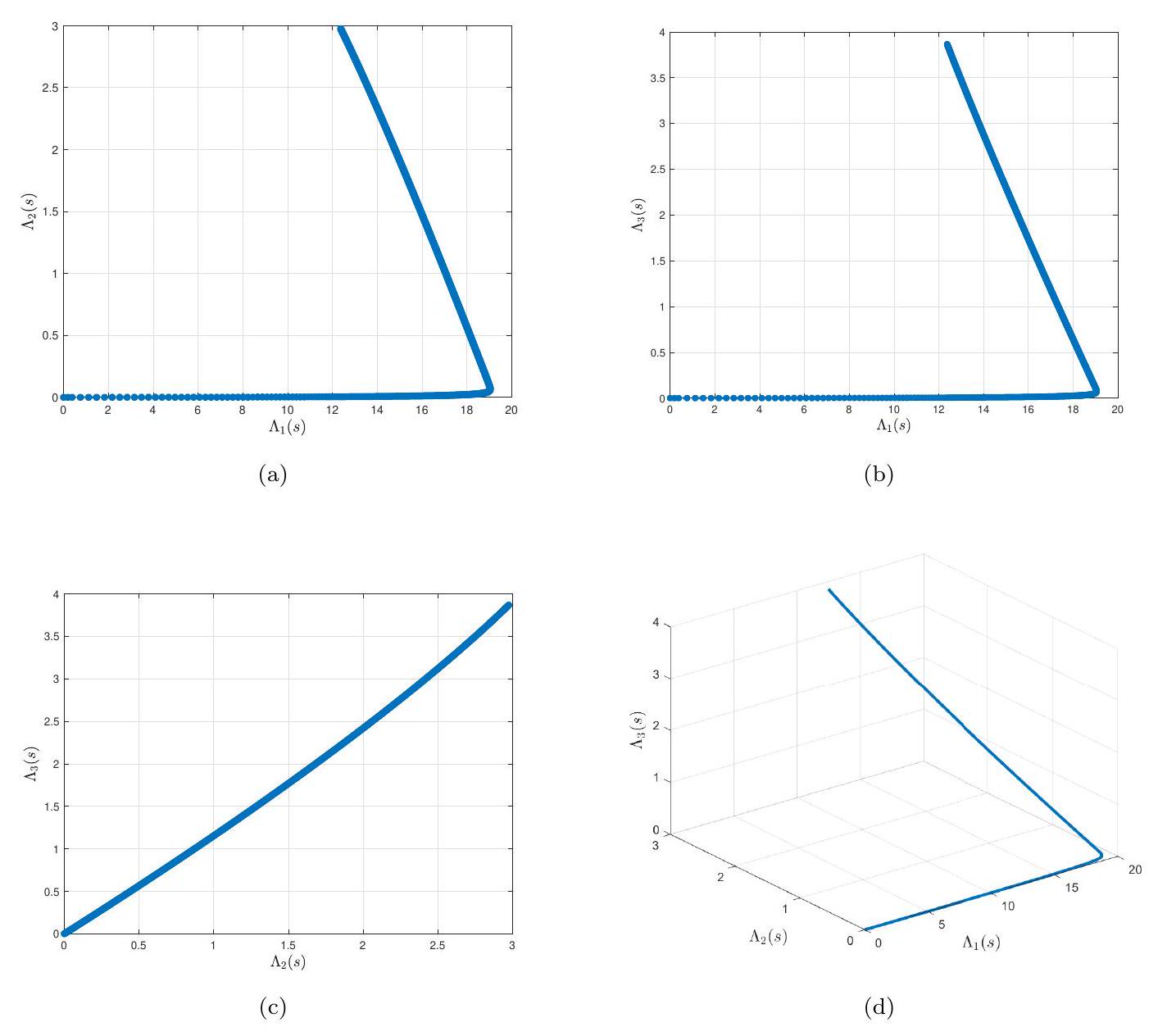
|
|
أدامز-باشفورث | متعددات نيوتن | ||||
|
|
|
|
|
|
|
|
| 0 | 0.000000 | 0.00000 | 0.000000 | 0.000000 | 0.000000 | 0.000000 |
| 1 | 1.420794 | 0.003639 | 0.004053 | 1.420289 | 0.003637 | 0.004052 |
| 2 | 3.352256 | 0.018270 | 0.020396 | 3.349409 | 0.017505 | 0.019538 |
| ٣ | ٤.٧٩٥٥٢٦ | 0.043383 | 0.048562 | ٤.٧٩١٧٩٨ | 0.041836 | 0.046821 |
| ٤ | 5.304589 | 0.073971 | 0.083050 | 5.303706 | 0.071660 | 0.080440 |
| ٥ | 5.281611 | 0.104988 | 0.118274 | 5.286096 | 0.101974 | 0.114856 |
| ٦ | 5.607511 | 0.135825 | 0.153543 | 5.616323 | 0.132176 | 0.149388 |
| ٧ | 6.832362 | 0.170701 | 0.193553 | 6.841809 | 0.166454 | 0.188698 |
| ٨ | 8.669954 | 0.214629 | 0.243923 | 8.677051 | 0.209775 | 0.238353 |
| 9 | 10.261233 | 0.268650 | 0.305891 | 10.266407 | 0.263162 | 0.299573 |
| 10 | 10.964396 | 0.328730 | 0.375035 | 10.971053 | 0.322611 | 0.367966 |
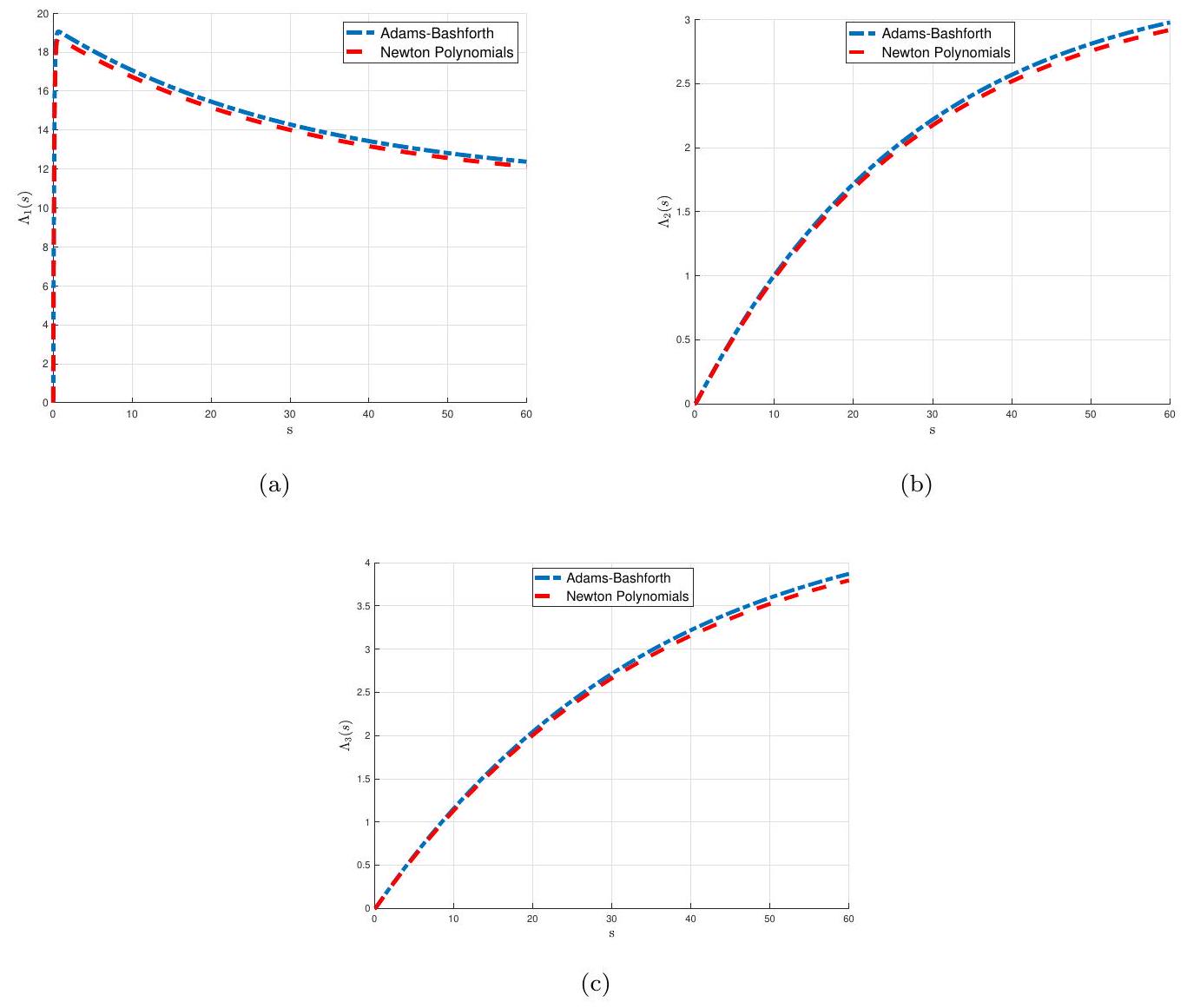
بيان مساهمة مؤلفي CRediT
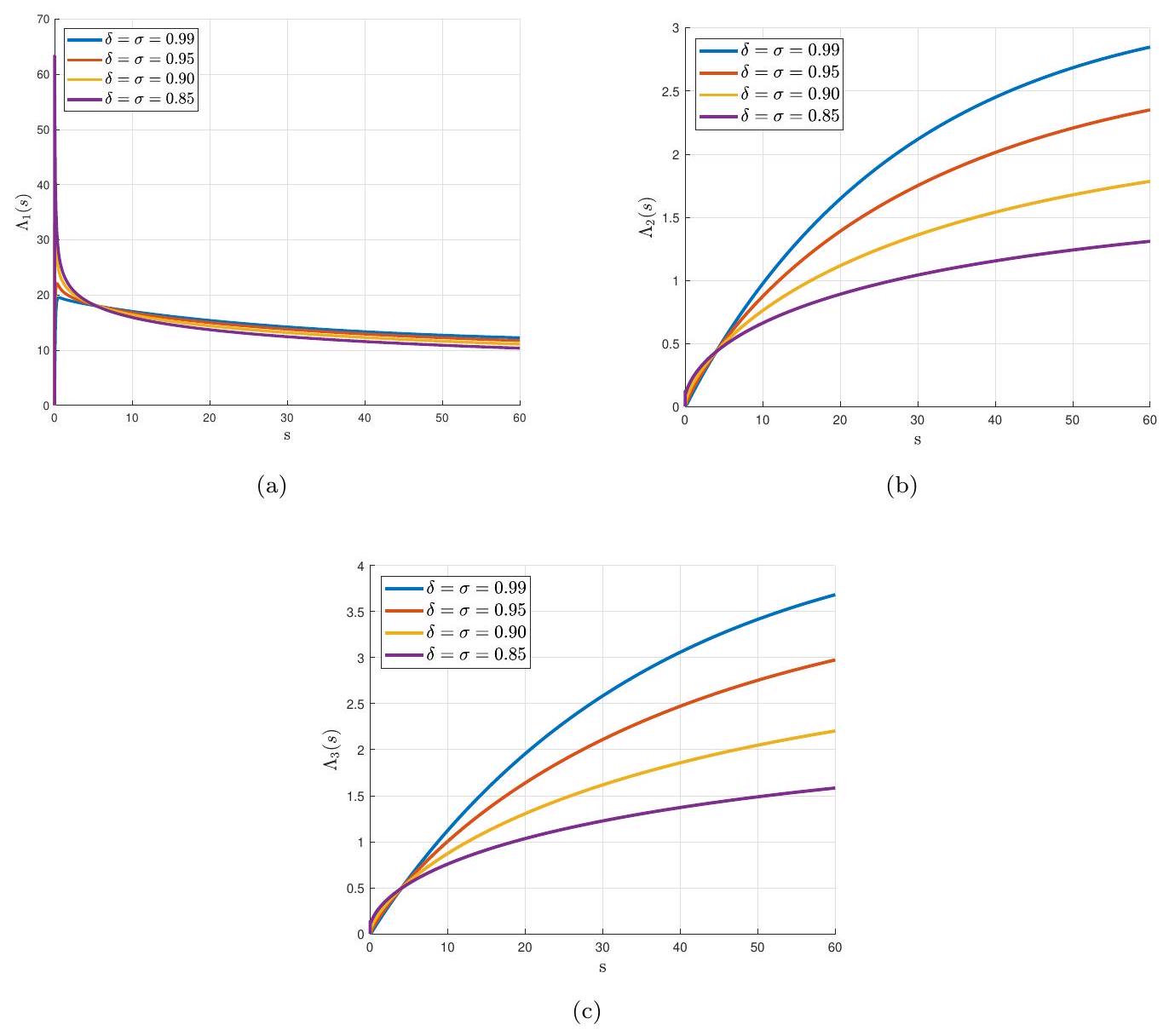

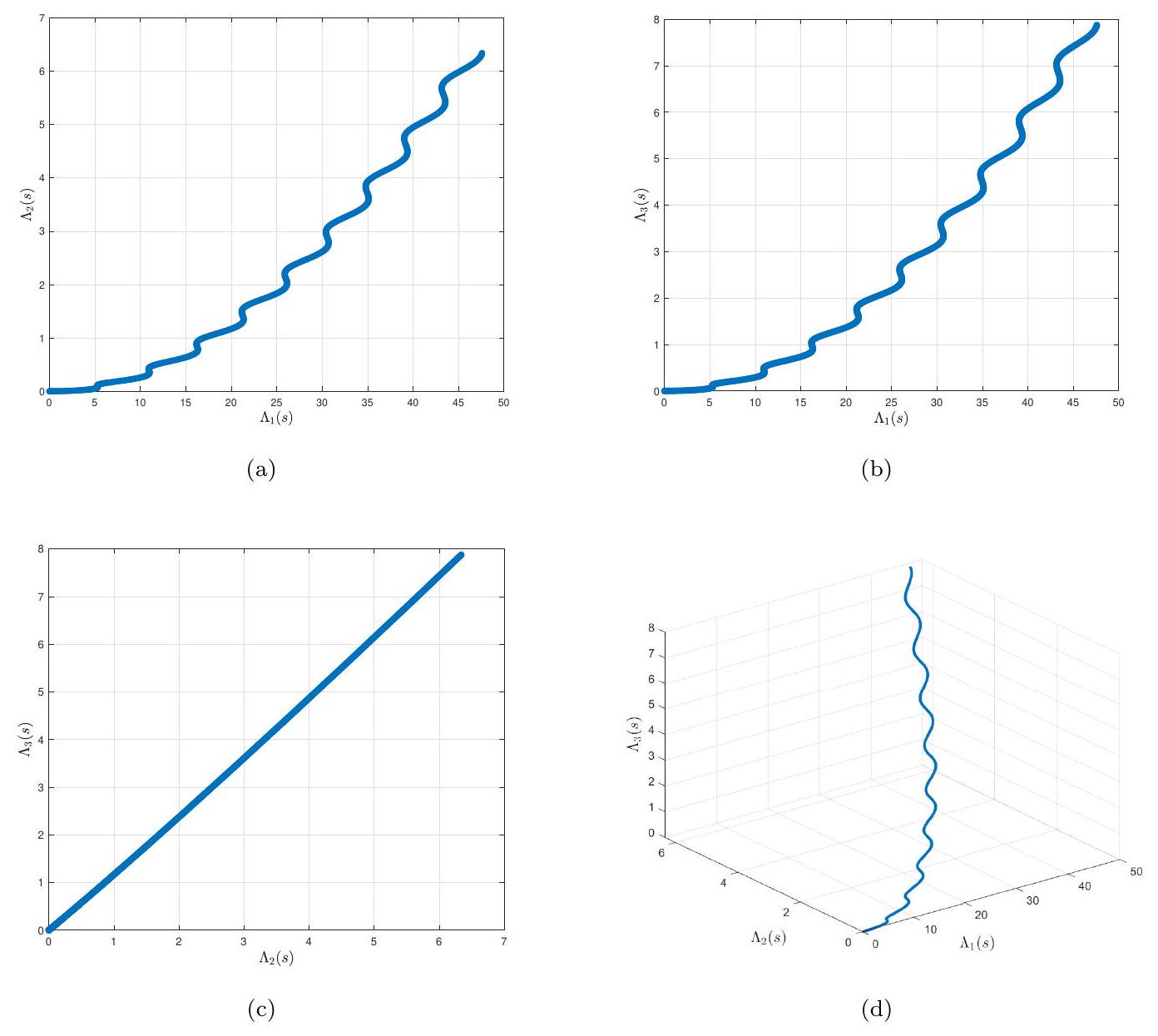
إعلان عن تضارب المصالح
توفر البيانات
شكر وتقدير
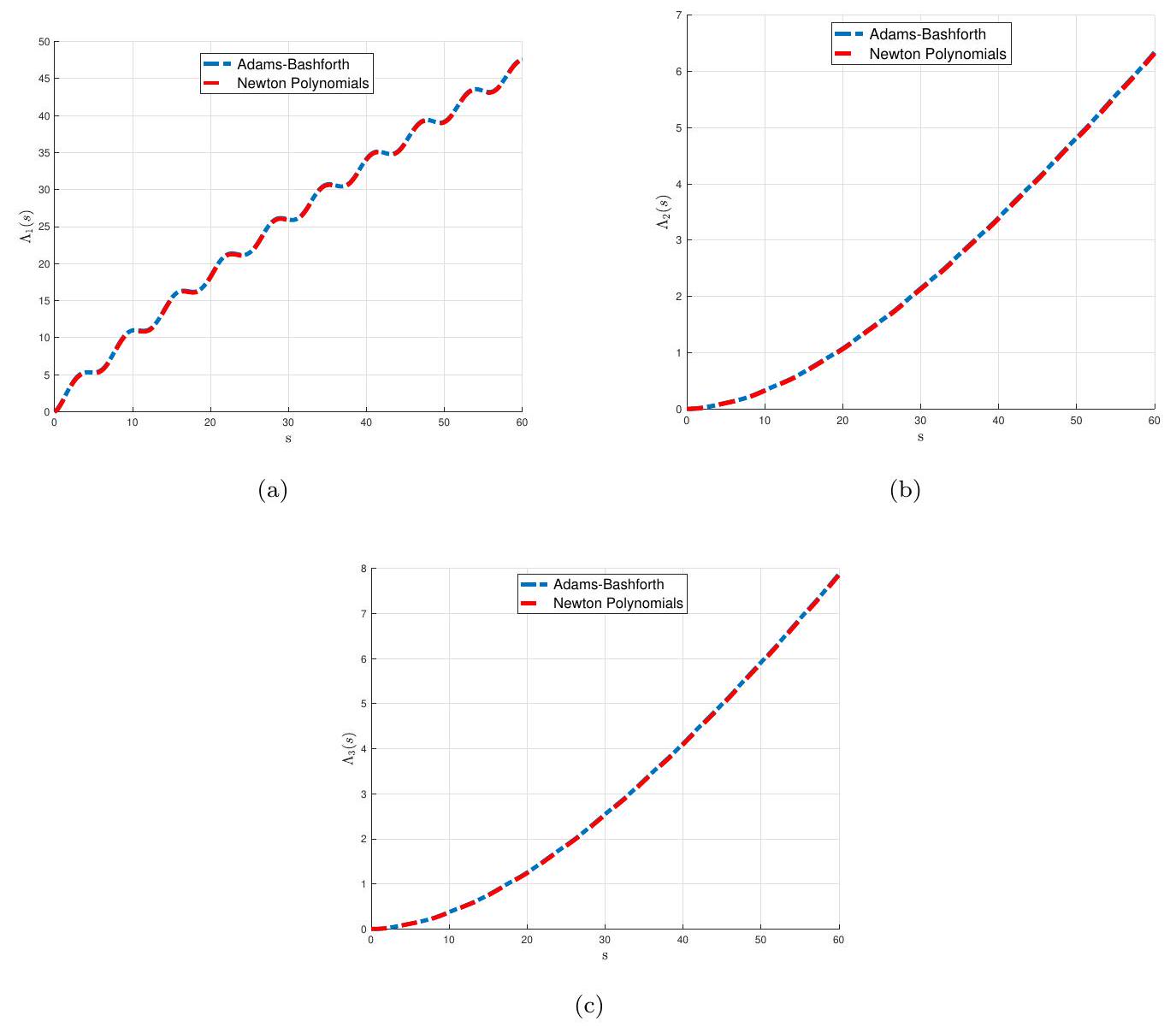
References
[2] Ş. Yüzbaşi, N. Şahin, M. Sezer, A collocation approach to solving the model of pollution for a system of lakes, Math. Computer Model., 55(3-4) (2012) 330-341. https://doi.org/10.1016/j.mcm.2011. 08.007
[3] B. Benhammouda, H. Vazquez-Leal, L. Hernandez-Martinez, Modified differential transform method for solving the model of pollution for a system of lakes, Discr. Dyn. Nat. Soc., 2014 (2014) 645726. https://doi.org/10.1155/2014/645726
[4] M. M. Khader, T. S. El Danaf, A. S. Hendy, A computational matrix method for solving systems of high order fractional differential equations, Appl. Math. Model., 37(6) (2013) 4035-4050. https: //doi.org/10.1016/j.apm.2012.08.009
[5] N. Bildik, S. Deniz, A new fractional analysis on the polluted lakes system, Chaos, Solitons & Fractals, 122 (2019) 17-24. https://doi.org/10.1016/j.chaos.2019.02.001
[6] M. M. D. Ahmed, M. A. Khan, Modeling and analysis of the polluted lakes system with various fractional approaches, Chaos, Solitons & Fractals, 134 (2020) 109720. https://doi.org/10.1016/ j.chaos.2020.109720
[7] D. G. Prakasha, P. Veeresha, Analysis of Lakes pollution model with Mittag-Leffler kernel, J. Ocean Eng. Sci., 5(4) (2020) 310-322. https://doi.org/10.1016/j.joes.2020.01.004
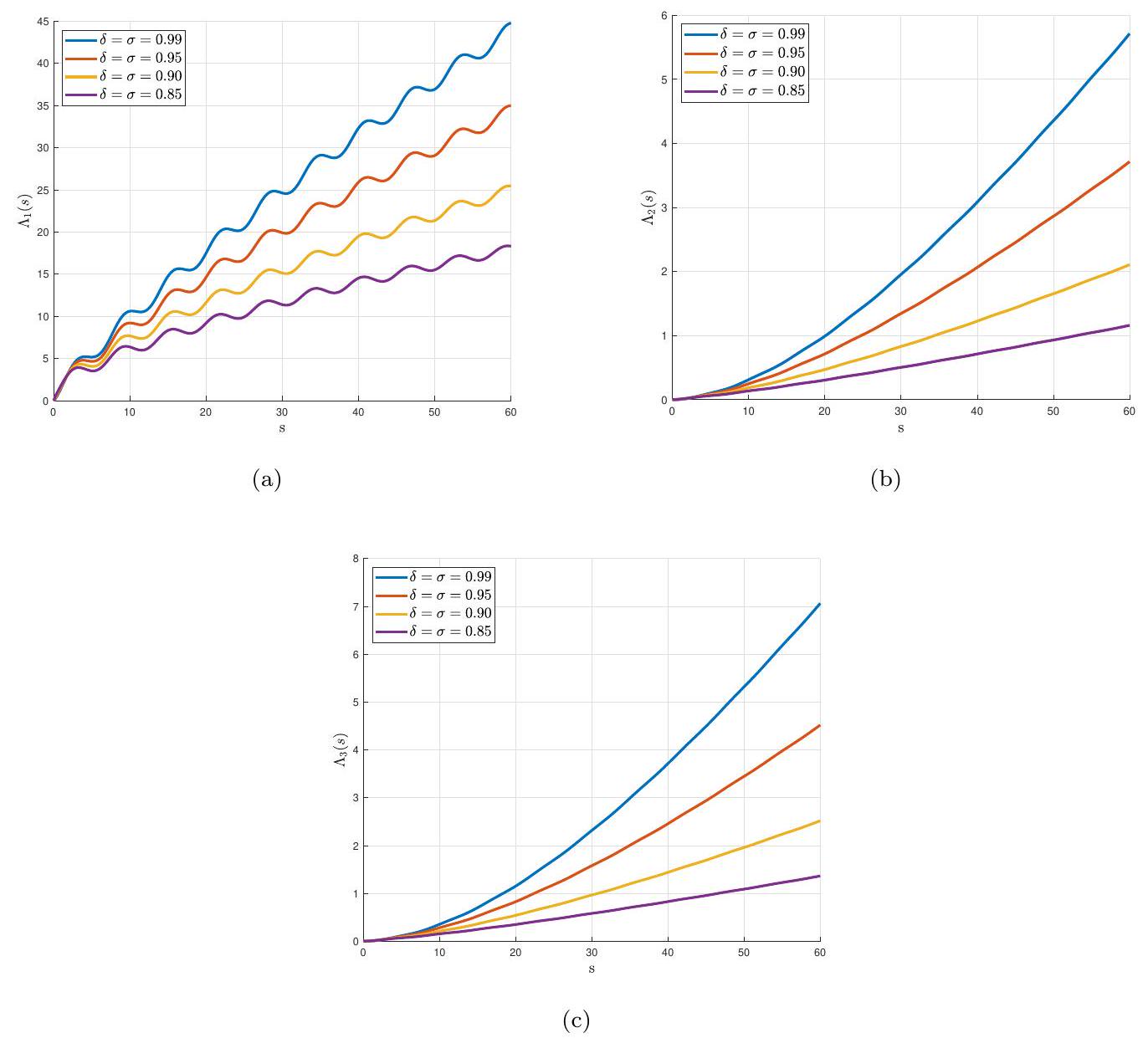
[9] A. Alsaedi, M. Alsulami, H. M. Srivastava, B. Ahmad, S. K. Ntouyas, Existence theory for nonlinear third-order ordinary differential equations with nonlocal multi-point and multi-strip boundary conditions, Symmetry, 11(2) (2019) 281. https://doi.org/10.3390/sym11020281
[10] M. R. Sidi Ammi, M. Tahiri, D. F. M. Torres, Necessary optimality conditions of a reaction-diffusion SIR model with ABC fractional derivatives, Discrete Contin. Dyn. Syst. Ser. S 15 (2022), no. 3, 621-637. https://doi.org/10.3934/dcdss. 2021155 arXiv:2106. 15055
[11] M. Aslam, R. Murtaza, T. Abdeljawad, G. ur Rahman, A. Khan, H. Khan, H. Gulzar, A fractional order HIV/AIDS epidemic model with Mittag-Leffler kernel, Adv. Differ. Equ., 2021 (2021), 107, 1-5. https://doi.org/10.1186/s13662-021-03264-5
[12] S. W. Ahmad, M. Sarwar, G. Rahmat, K. Shah, H. Ahmad, A. A. A. Mousa, Fractional order model for the Coronavirus (COVID-19) in Wuhan, China, Fractals, 30 (2022), 2240007. https: //doi.org/10.1142/S0218348X22400072
[13] J. K. K. Asamoah, E. Okyere, E. Yankson, A. A. Opoku, A. Adom-Konadu, E. Acheampong, Y. D. Arthur, Non-fractional and fractional mathematical analysis and simulations for Q fever, Chaos, Solitons & Fractals, 156 (2022), 111821. https://doi.org/10.1016/j.chaos.2022.111821
[14] H. Khan, Y. G. Li, W. Chen, D. Baleanu, A. Khan, Existence theorems and Hyers-Ulam stability for a coupled system of fractional differential equations with
[15] Z. Ali, F. Rabiei and K. Hosseini, A fractal-fractional-order modified Predator-Prey mathematical model with immigrations, Math. Comput. Simulation 207 (2023), 466-481. https://doi.org/10. 1016/j.matcom.2023.01.006
[16] A. Atangana, Fractal-fractional differentiation and integration: connecting fractal calculus and fractional calculus to predict complex system, Chaos, Solitons & Fractals, 102 (2017) 396-406. https://doi.org/10.1016/j.chaos.2017.04.027
[17] K. Shah, M. Arfan, I. Mahariq, A. Ahmadian, S. Salahshour, M. Ferrara, Fractal-fractional mathematical model addressing the situation of Corona virus in Pakistan, Res. Phys., 19 (2020) 103560. https://doi.org/10.1016/j.rinp.2020.103560
[18] J. F. Gomez-Aguilar, T. Cordova-Fraga, T. Abdeljawad, A. Khan, H. Khan, Analysis of fractalfractional Malaria transmission model, Fractals, 28(08) (2020) 2040041. https://doi.org/10.1142/ S0218348X20400411
[19] Z. Ali, F. Rabiei, K. Shah, T. Khodadadi, Qualitative analysis of fractal-fractional order COVID19 mathematical model with case study of Wuhan, Alex. Eng. J., 60(1) (2021) 477-489. https: //doi.org/10.1016/j.aej.2020.09.020
[20] S. Etemad, I. Avci, P. Kumar, D. Baleanu, S. Rezapour, Some novel mathematical analysis on the fractal-fractional model of the AH1N1/09 virus and its generalized Caputo-type version, Chaos, Solitons
[21] J. K. K. Asamoah, Fractal-fractional model and numerical scheme based on Newton polynomial for Q fever disease under Atangana-Baleanu derivative, Res. Phys., 34 (2022) 105189. https://doi.org/ 10.1016/j.rinp.2022.105189
[22] S. Ahmad, A. Ullah, A. Akgul, M. De la Sen, Study of HIV disease and its association with immune cells under nonsingular and nonlocal fractal-fractional operator, Complexity, 2021 (2021) 1904067. https://doi.org/10.1155/2021/1904067
[23] H. Najafi, S. Etemad, N. Patanarapeelert, J. K. K. Asamoah, S. Rezapour, T. Sitthiwirattham, A study on dynamics of
[24] H. Khan, K. Alam, H. Gulzar, S. Etemad, S. Rezapour, A case study of fractal-fractional tuberculosis model in China: Existence and stability theories along with numerical simulations, Math. Comput. Simul., 198 (2022) 455-473. https://doi.org/10.1016/j.matcom.2022.03.009
[25] A. Granas, J. Dugundji, Fixed Point Theory, Springer-Verlag, New York (2003).
[26] A. Atangana, S. İ Araz, New numerical scheme with Newton polynomial-theory, methods, and applications, Elsevier/Academic Press, London, 2021.
*Correspondence: tanzeelakanwal16@gmail.com (T.K.); sh.rezapour@azaruniv.ac.ir (S.R.); delfim@ua.pt (D.F.M.T.)
DOI: https://doi.org/10.1016/j.chaos.2024.114653
Publication Date: 2024-02-26
Dynamics of a Model of Polluted Lakes via Fractal-Fractional Operators with Two Different Numerical Algorithms
Abstract
We employ Mittag-Leffler type kernels to solve a system of fractional differential equations using fractal-fractional (FF) operators with two fractal and fractional orders. Using the notion of FF-derivatives with nonsingular and nonlocal fading memory, a model of three polluted lakes with one source of pollution is investigated. The properties of a non-decreasing and compact mapping are used in order to prove the existence of a solution for the FFmodel of polluted lake system. For this purpose, the Leray-Schauder theorem is used. After exploring stability requirements in four versions, the proposed model of polluted lakes system is then simulated using two new numerical techniques based on Adams-Bashforth and Newton polynomials methods. The effect of fractal-fractional differentiation is illustrated numerically. Moreover, the effect of the FF-derivatives is shown under three specific input models of the pollutant: linear, exponentially decaying, and periodic.
MSC: 34A08; 65P99.
1 Introduction
tions to demonstrate uniqueness of solution. Furthermore, using functional analysis, numerous requirements for different types of stability for the solution to the polluted lakes system model are explored in Section 5. To simulate our model, we use two different techniques: a fractional Adams-Bashforth approach (Section 6) and a second one based on Newton’s polynomials (Section 7). The obtained theoretical results are then tested in Section 8 by applying our algorithms with some concrete data under various fractal and fractional order values in three different cases: linear, exponentially decaying and periodic input real models. We end with Section 9 of conclusion.
2 The FF-model for a polluted system of three lakes

In what follows, we also use the corresponding notion of fractal-fractional integral.
Definition 2 (See [16]). The (
3 Existence
(Y1)
(Y2)
Given that the polluted lake system models a real-world problem, its existence is subject to certain constraints. These constraints, denoted in Theorem 4 as (P1) and (P2), play a crucial role in shaping the dynamics and characteristics of the system. Indeed, (P1) and (P2) are indispensable to define and regulate the behavior of the polluted lake system within the confines of practicality and reality. Recognizing these constraints is essential for constructing a comprehensive understanding of the system and developing effective strategies.
(P1)
then there exists a solution to the fractal-fractional polluted lake system (4).
Proof. First, consider
4 Uniqueness
(C1)
Then,
Theorem 6. Let (C1) hold. If
5 Ulam-Hyers-Rassias stability
(i)
(ii) one has
Remark 11. If
(i)
(ii) we have
Lemma 14. For each
To prove our next result (see Lemma 15), we consider the following condition:
(C2) there exists increasing mappings
We are now in a position to investigate the Ulam-Hyers stability for the FF-model of polluted lake system (4).
Proof. Let
6 Numerical algorithm via the Adams-Bashforth method
7 Numerical algorithm via Newton’s polynomials
8 Numerical simulations and discussion
8.1 Linear input model
view of

|
|
Adams-Bashforth | Newton Polynomials | ||||
|
|
|
|
|
|
|
|
| 0 | 0.000000 | 0.00000 | 0.000000 | 0.000000 | 0.000000 | 0.000000 |
| 1 | 58.241762 | 0.122200 | 0.136038 | 58.249029 | 0.114027 | 0.126944 |
| 2 | 216.569135 | 0.912690 | 1.018175 | 216.603012 | 0.891958 | 0.995030 |
| 3 | 472.231987 | 2.959673 | 3.308340 | 472.291839 | 2.926723 | 3.271438 |
| 4 | 824.018631 | 6.830863 | 7.650506 | 824.103833 | 6.786029 | 7.600138 |
| 5 | 1270.753481 | 13.074750 | 14.671769 | 1270.863423 | 13.018359 | 14.608218 |
| 6 | 1811.296055 | 22.221220 | 24.982726 | 1811.430139 | 22.153588 | 24.906273 |
| 7 | 2444.539990 | 34.782156 | 39.177854 | 2444.697632 | 34.703595 | 39.088774 |
| 8 | 3169.412094 | 51.252025 | 57.835881 | 3169.592721 | 51.162836 | 57.734443 |
| 9 | 3984.871413 | 72.108440 | 81.520147 | 3985.074465 | 72.008917 | 81.406618 |
| 10 | 4889.908324 | 97.812711 | 110.778966 | 4890.133254 | 97.703141 | 110.653605 |
In Figure 4, we illustrate the behavior of the three state functions
8.2 Exponentially decaying input model

8.3 Periodic input model


|
|
Adams-Bashforth | Newton Polynomials | ||||
|
|
|
|
|
|
|
|
| 0 | 0.000000 | 0.00000 | 0.000000 | 0.000000 | 0.000000 | 0.000000 |
| 1 | 18.988642 | 0.105437 | 0.117578 | 18.988592 | 0.105145 | 0.117021 |
| 2 | 18.748146 | 0.219107 | 0.245295 | 18.752821 | 0.216590 | 0.242237 |
| 3 | 18.513934 | 0.328934 | 0.369679 | 18.523194 | 0.324269 | 0.364185 |
| 4 | 18.286698 | 0.435044 | 0.490805 | 18.300406 | 0.428303 | 0.482940 |
| 5 | 18.066244 | 0.537556 | 0.608748 | 18.084267 | 0.528808 | 0.598573 |
| 6 | 17.852383 | 0.636586 | 0.723579 | 17.874593 | 0.625901 | 0.711155 |
| 7 | 17.644931 | 0.732247 | 0.835369 | 17.671201 | 0.719691 | 0.820757 |
| 8 | 17.443709 | 0.824649 | 0.944190 | 17.473918 | 0.810285 | 0.927446 |
| 9 | 17.248540 | 0.913898 | 1.050109 | 17.282570 | 0.897787 | 1.031291 |
| 10 | 17.059256 | 1.000097 | 1.153195 | 17.096990 | 0.982299 | 1.132359 |
9 Conclusion

|
|
Adams-Bashforth | Newton Polynomials | ||||
|
|
|
|
|
|
|
|
| 0 | 0.000000 | 0.00000 | 0.000000 | 0.000000 | 0.000000 | 0.000000 |
| 1 | 1.420794 | 0.003639 | 0.004053 | 1.420289 | 0.003637 | 0.004052 |
| 2 | 3.352256 | 0.018270 | 0.020396 | 3.349409 | 0.017505 | 0.019538 |
| 3 | 4.795526 | 0.043383 | 0.048562 | 4.791798 | 0.041836 | 0.046821 |
| 4 | 5.304589 | 0.073971 | 0.083050 | 5.303706 | 0.071660 | 0.080440 |
| 5 | 5.281611 | 0.104988 | 0.118274 | 5.286096 | 0.101974 | 0.114856 |
| 6 | 5.607511 | 0.135825 | 0.153543 | 5.616323 | 0.132176 | 0.149388 |
| 7 | 6.832362 | 0.170701 | 0.193553 | 6.841809 | 0.166454 | 0.188698 |
| 8 | 8.669954 | 0.214629 | 0.243923 | 8.677051 | 0.209775 | 0.238353 |
| 9 | 10.261233 | 0.268650 | 0.305891 | 10.266407 | 0.263162 | 0.299573 |
| 10 | 10.964396 | 0.328730 | 0.375035 | 10.971053 | 0.322611 | 0.367966 |

CRediT authorship contribution statement



Declaration of competing interest
Data availability
Acknowledgments

References
[2] Ş. Yüzbaşi, N. Şahin, M. Sezer, A collocation approach to solving the model of pollution for a system of lakes, Math. Computer Model., 55(3-4) (2012) 330-341. https://doi.org/10.1016/j.mcm.2011. 08.007
[3] B. Benhammouda, H. Vazquez-Leal, L. Hernandez-Martinez, Modified differential transform method for solving the model of pollution for a system of lakes, Discr. Dyn. Nat. Soc., 2014 (2014) 645726. https://doi.org/10.1155/2014/645726
[4] M. M. Khader, T. S. El Danaf, A. S. Hendy, A computational matrix method for solving systems of high order fractional differential equations, Appl. Math. Model., 37(6) (2013) 4035-4050. https: //doi.org/10.1016/j.apm.2012.08.009
[5] N. Bildik, S. Deniz, A new fractional analysis on the polluted lakes system, Chaos, Solitons & Fractals, 122 (2019) 17-24. https://doi.org/10.1016/j.chaos.2019.02.001
[6] M. M. D. Ahmed, M. A. Khan, Modeling and analysis of the polluted lakes system with various fractional approaches, Chaos, Solitons & Fractals, 134 (2020) 109720. https://doi.org/10.1016/ j.chaos.2020.109720
[7] D. G. Prakasha, P. Veeresha, Analysis of Lakes pollution model with Mittag-Leffler kernel, J. Ocean Eng. Sci., 5(4) (2020) 310-322. https://doi.org/10.1016/j.joes.2020.01.004

[9] A. Alsaedi, M. Alsulami, H. M. Srivastava, B. Ahmad, S. K. Ntouyas, Existence theory for nonlinear third-order ordinary differential equations with nonlocal multi-point and multi-strip boundary conditions, Symmetry, 11(2) (2019) 281. https://doi.org/10.3390/sym11020281
[10] M. R. Sidi Ammi, M. Tahiri, D. F. M. Torres, Necessary optimality conditions of a reaction-diffusion SIR model with ABC fractional derivatives, Discrete Contin. Dyn. Syst. Ser. S 15 (2022), no. 3, 621-637. https://doi.org/10.3934/dcdss. 2021155 arXiv:2106. 15055
[11] M. Aslam, R. Murtaza, T. Abdeljawad, G. ur Rahman, A. Khan, H. Khan, H. Gulzar, A fractional order HIV/AIDS epidemic model with Mittag-Leffler kernel, Adv. Differ. Equ., 2021 (2021), 107, 1-5. https://doi.org/10.1186/s13662-021-03264-5
[12] S. W. Ahmad, M. Sarwar, G. Rahmat, K. Shah, H. Ahmad, A. A. A. Mousa, Fractional order model for the Coronavirus (COVID-19) in Wuhan, China, Fractals, 30 (2022), 2240007. https: //doi.org/10.1142/S0218348X22400072
[13] J. K. K. Asamoah, E. Okyere, E. Yankson, A. A. Opoku, A. Adom-Konadu, E. Acheampong, Y. D. Arthur, Non-fractional and fractional mathematical analysis and simulations for Q fever, Chaos, Solitons & Fractals, 156 (2022), 111821. https://doi.org/10.1016/j.chaos.2022.111821
[14] H. Khan, Y. G. Li, W. Chen, D. Baleanu, A. Khan, Existence theorems and Hyers-Ulam stability for a coupled system of fractional differential equations with
[15] Z. Ali, F. Rabiei and K. Hosseini, A fractal-fractional-order modified Predator-Prey mathematical model with immigrations, Math. Comput. Simulation 207 (2023), 466-481. https://doi.org/10. 1016/j.matcom.2023.01.006
[16] A. Atangana, Fractal-fractional differentiation and integration: connecting fractal calculus and fractional calculus to predict complex system, Chaos, Solitons & Fractals, 102 (2017) 396-406. https://doi.org/10.1016/j.chaos.2017.04.027
[17] K. Shah, M. Arfan, I. Mahariq, A. Ahmadian, S. Salahshour, M. Ferrara, Fractal-fractional mathematical model addressing the situation of Corona virus in Pakistan, Res. Phys., 19 (2020) 103560. https://doi.org/10.1016/j.rinp.2020.103560
[18] J. F. Gomez-Aguilar, T. Cordova-Fraga, T. Abdeljawad, A. Khan, H. Khan, Analysis of fractalfractional Malaria transmission model, Fractals, 28(08) (2020) 2040041. https://doi.org/10.1142/ S0218348X20400411
[19] Z. Ali, F. Rabiei, K. Shah, T. Khodadadi, Qualitative analysis of fractal-fractional order COVID19 mathematical model with case study of Wuhan, Alex. Eng. J., 60(1) (2021) 477-489. https: //doi.org/10.1016/j.aej.2020.09.020
[20] S. Etemad, I. Avci, P. Kumar, D. Baleanu, S. Rezapour, Some novel mathematical analysis on the fractal-fractional model of the AH1N1/09 virus and its generalized Caputo-type version, Chaos, Solitons
[21] J. K. K. Asamoah, Fractal-fractional model and numerical scheme based on Newton polynomial for Q fever disease under Atangana-Baleanu derivative, Res. Phys., 34 (2022) 105189. https://doi.org/ 10.1016/j.rinp.2022.105189
[22] S. Ahmad, A. Ullah, A. Akgul, M. De la Sen, Study of HIV disease and its association with immune cells under nonsingular and nonlocal fractal-fractional operator, Complexity, 2021 (2021) 1904067. https://doi.org/10.1155/2021/1904067
[23] H. Najafi, S. Etemad, N. Patanarapeelert, J. K. K. Asamoah, S. Rezapour, T. Sitthiwirattham, A study on dynamics of
[24] H. Khan, K. Alam, H. Gulzar, S. Etemad, S. Rezapour, A case study of fractal-fractional tuberculosis model in China: Existence and stability theories along with numerical simulations, Math. Comput. Simul., 198 (2022) 455-473. https://doi.org/10.1016/j.matcom.2022.03.009
[25] A. Granas, J. Dugundji, Fixed Point Theory, Springer-Verlag, New York (2003).
[26] A. Atangana, S. İ Araz, New numerical scheme with Newton polynomial-theory, methods, and applications, Elsevier/Academic Press, London, 2021.
*Correspondence: tanzeelakanwal16@gmail.com (T.K.); sh.rezapour@azaruniv.ac.ir (S.R.); delfim@ua.pt (D.F.M.T.)
